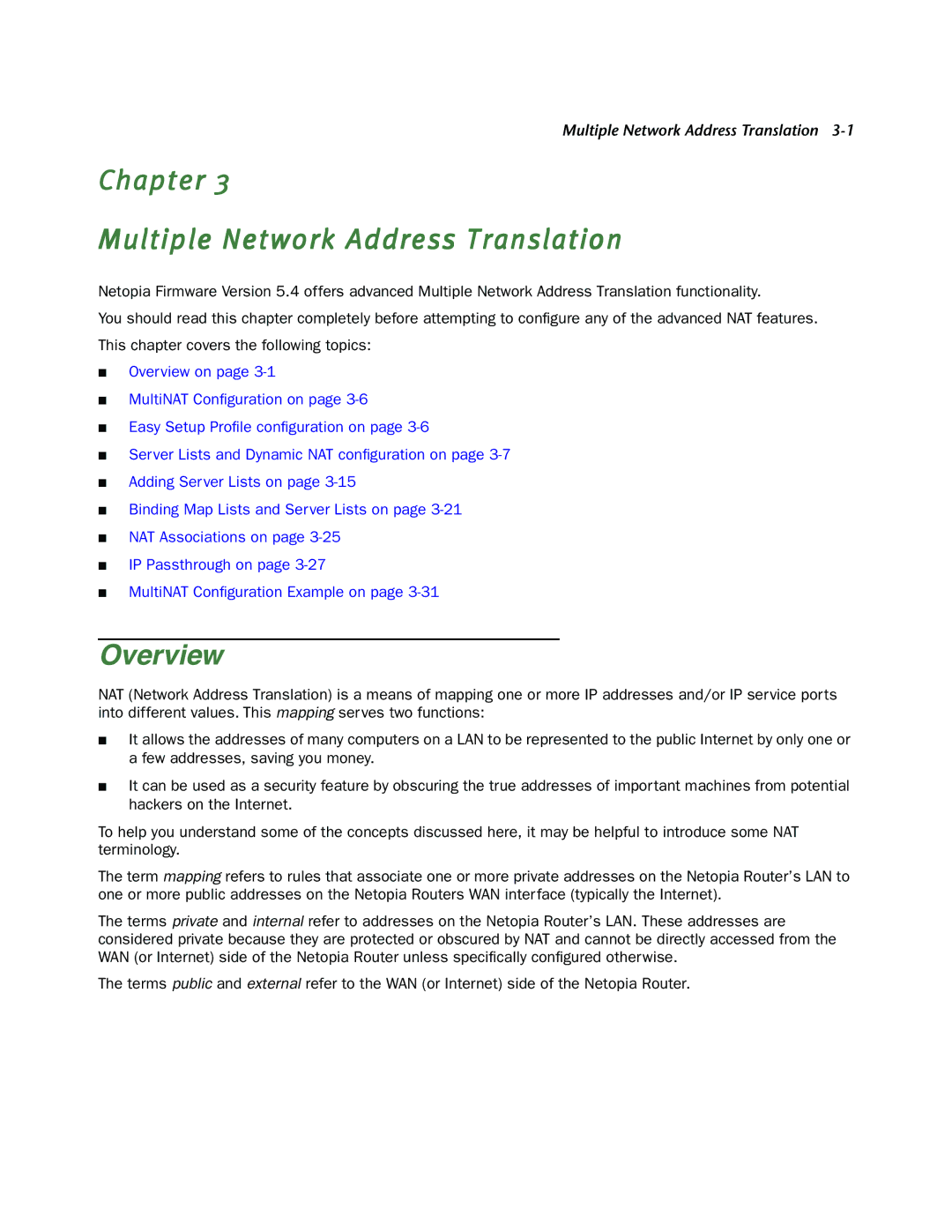Multiple Network Address Translation
Chapter 3
Multiple Network Address Translation
Netopia Firmware Version 5.4 offers advanced Multiple Network Address Translation functionality.
You should read this chapter completely before attempting to configure any of the advanced NAT features.
This chapter covers the following topics:
■Overview on page
■MultiNAT Configuration on page
■Easy Setup Profile configuration on page
■Server Lists and Dynamic NAT configuration on page
■Adding Server Lists on page
■Binding Map Lists and Server Lists on page
■NAT Associations on page
■IP Passthrough on page
■MultiNAT Configuration Example on page
Overview
NAT (Network Address Translation) is a means of mapping one or more IP addresses and/or IP service ports into different values. This mapping serves two functions:
■It allows the addresses of many computers on a LAN to be represented to the public Internet by only one or a few addresses, saving you money.
■It can be used as a security feature by obscuring the true addresses of important machines from potential hackers on the Internet.
To help you understand some of the concepts discussed here, it may be helpful to introduce some NAT terminology.
The term mapping refers to rules that associate one or more private addresses on the Netopia Router’s LAN to one or more public addresses on the Netopia Routers WAN interface (typically the Internet).
The terms private and internal refer to addresses on the Netopia Router’s LAN. These addresses are considered private because they are protected or obscured by NAT and cannot be directly accessed from the WAN (or Internet) side of the Netopia Router unless specifically configured otherwise.
The terms public and external refer to the WAN (or Internet) side of the Netopia Router.
